I got into a bit of trouble in the comments a few weeks back when I joked that Grete Waitz may have died from marathoning. Steve replied:
Paul, you said “… marathoning (from which Grete Waitz just died at 57)”
Gee. The news said cancer. How confident are you that she died “from” running marathons?
Of course, not confident at all. Maybe if she’d been a sprinter she would have died at 54. Maybe if Lance Armstrong had been a couch potato he would still have had testicular cancer metastasized to his brain and lung at age 25.
A few days ago I got an email. Two highly fit endurance athletes, both of whom have always tended to their health and been careful to eat “healthy” (i.e. vegetable and whole grain rich, meat and fat poor) diets, have contracted cancers in the prime of life and been given less than a year to live. My correspondent asked, “Why?”
Let’s look into this. Is it possible that endurance exercise, especially if combined with a high-carb diet, may promote cancer?
Oxidative Damage to DNA and Cancer
Human DNA is constantly being damaged and repaired. It’s been estimated that over the course of a cell cycle – that is, from the time a cell is formed to the time it divides into two daughter cells – a human cell develops 5,000 single-stranded DNA breaks due to oxidative damage from reactive oxygen species (ROS). The vast majority are repaired by the body’s DNA repair machinery. [1]
However, in typical human cells 0.1% or 5 are not successfully repaired; instead a corresponding break is created in the complementary DNA strand, resulting in a double-strand break. In people with Bloom syndrome, an inherited condition which creates a strong predisposition to cancer, fully 1% or 50 are not successfully repaired. [1]
The double-strand break leads to a re-arrangement or “translocation” of parts of the chromosome. Usually, this does not break the coding region for a protein, but it does break non-coding regions resulting in changes to gene expression.
These sorts of genetic changes are observed both in cancer and in aging. [1] In short, oxidative damage to DNA is considered a risk factor for cancer development.
Oxidative Damage to DNA Has Been Specifically Linked to Endurance Exercise
Diets and activities that increase oxidative stress – for instance, diets deficient in antioxidant minerals – can therefore increase cancer risk. And diets and activities that minimize oxidative stress can minimize cancer risk and facilitate recovery.
Endurance exercise generates oxidative stress. Marathon running “caused a large increase in the tissue content of oxidized glutathione (189%) at the expense of reduced glutathione (-18%).” [2]
Moreover, endurance exercise damages DNA:
Both a systemic inflammatory response as well as DNA damage has been observed following exhaustive endurance exercise….
Extremely demanding endurance exercise has been shown to induce both a systemic inflammatory response [15, 42, 53, 71] as well as DNA damage [21, 36, 58, 62, 80]….
Exercise-induced DNA damage in peripheral blood cells appear to be mainly a consequence of an increased production of reactive oxygen and nitrogen species (RONS) during and after vigorous aerobic exercise [58]. Besides oxidative stress, other factors such as metabolic, hormonal and thermal stress in addition to the ultra-structural damage of muscle tissue are characteristic responses to prolonged strenuous exercise, that can lead to the release of cytokines, acute phase proteins and to the activation or inhibition of certain lines of the cellular immune system [15, 29]. [3]
There seems to be a big difference between moderate exercise and exercise to exhaustion. Moderate exercise actually protects DNA by upregulating DNA repair:
Sato et al. showed that acute mild exercise as well as chronic moderate training does not result in DNA damage, but rather leads to an elevation in the sanitization system of DNA damage [66]. [3]
However, endurance exercise leads to increased DNA damage:
Increased levels of DNA strand breaks were observed after exhaustive treadmill running in subjects of different training status [22, 45]….
In conclusion, there is growing evidence that strenuous exercise can lead to DNA damage that with few exceptions [36] is predominantly observed not before 24 h after the resolution of exercise [21, 44, 45, 80]. [3]
In addition, strenuous endurance exercise induces hormonal and other changes which might promote cancer. An Ironman triathlon has significant effects on hormones and inflammatory markers, some of which persist for more than 19 days post-race:
Briefly, as described in details elsewhere [42], there were significant (P<0.001) increases in total leukocyte counts, MPO, PMN elastase, cortisol, CK activity, myoglobin, IL-6, IL-10 and hs-CRP, whereas testosterone significantly (P<0.001) decreased compared to pre-race. Except for cortisol, which decreased below pre-race values (P<0.001), these alterations persisted 1 d post-race (P<0.001, P<0.01 for IL-10). Five days post-race CK activity, myoglobin, IL-6 and hs-CRP had decreased, but were still significantly (P<0.001) elevated. Nineteen days post-race most parameters had returned to pre-race values, with the exception of MPO and PMN elastase, which had both significantly (P<0.001) decreased below pre-race concentrations, and myoglobin and hs-CRP, which were slightly, but significantly higher than pre-race [42]. [3]
In the opinion of the authors of this review, the biggest problem is production of reactive oxygen and nitrogen species (RONS) by damaged immune cells:
The most conclusive picture that emerges from the available data is that oxidative stress seems to be the main link between exercise-induced inflammation and DNA damage…. DNA damage in peripheral immuno-competent cells, indeed, most likely resulted from an increased generation of RONS due to initial systemic inflammatory responses or the delayed inflammatory processes in response to muscle damage (Fig. 1). [3]
What About High-Carb Diets?
Do high-carb diets contribute?
During strenuous exercise mitochondria produce oxidation products:
The mitochondrial electron transport system can trigger the formation of superoxide leading to increased production of H2O2 by superoxide dismutase [49], [50]. [4]
In a normal person at rest, about 1-2% of the oxygen utilized by mitochondria ends up in superoxide. [4]
Before we go further let’s take a brief detour into mitochondrial chemistry: specifically, something called the electron transport chain.
Here’s a stylized view:
Source: Wikipedia.
The main point for our purposes is that there are two points of entry into the chain, one that goes through complex I and one that bypasses it.
Glucose metabolism favors entry via complex I, while fatty acid metabolism is relatively more favorable to entry via complex II. Quantitatively, glucose metabolism produces 5 NADH molecules (entering at complex I) for every one succinate molecule (entering at complex II), while fatty acid metabolism produces only 2 NADH for every one succinate.
High-carb dieting tends to habituate the body to metabolism of glucose. Therefore, it increases utilization of complex I.
This is significant because complex I is vulnerable to production of excess oxidative stress under some circumstances.
In principle, every mitochondrial complex has the potential to operate cleanly with minimal production of superoxide. However, if mitochondrial function is in any way impaired, so that operation of a complex is inhibited, then ROS production can rise substantially.
If for some reason electrons cannot flow properly through the electron transport chain, then they leave as superoxide:
One factor which may sensitise cells to increased DNA damage is impaired mitochondrial function [74]…. Reduced electron flow through the mitochondrial respiratory chain, particularly through the inhibition of complex I or complex III, favours the enhanced production of superoxide and H2O2 [75]. Together, with the age-dependent increase in oxidative stress and decline in NAD+ and ATP content, we found a tendency to the reduction in the activity of the respiratory complexes with age in all organs. Sipos et al. (2003) showed that mitochondrial formation of H2O2 due to complex I inhibition is more clinically relevant than ROS production due to inhibition of complex III and IV in situ [76]. [4]
What exactly did Sipos et al. find? They state:
ROS formation was not detected until complex III was inhibited by up to 71 +/- 4%, above that threshold inhibition, decrease in aconitase activity indicated an enhanced ROS generation. Similarly, threshold inhibition of complex IV caused an accelerated ROS production. By contrast, inactivation of complex I to a small extent (16 +/- 2%) resulted in a significant increase in ROS formation, and no clear threshold inhibition could be determined. [5]
Basically, superoxide can be generated in complexes I, III, and IV. However, in complexes III and IV, there is a high threshold of inhibition of electron transport before any superoxide is produced. In complex I, there is no threshold: even very slight inhibition will generate ROS. This means that during practical living, the great majority of excess ROS is produced from complex I.
This means that high-carb dieting, which increases utilization of complex I, will tend to generate oxidative stress if there is any inhibition of complex I.
But in endurance exercise, there is inhibition of complex I. To name just one pathway, exercise increases levels of the hormone DHEA, and DHEA inhibits complex I. [6]
It looks like high-carb diets and endurance exercise may be a bad combination.
Are Whole Grains Especially Bad?
There may be specific problems with grain toxins. For instance, wheat germ agglutinin, a wheat toxin that is very effective at distributing itself through the body through transcytosis, is able to damage mitochondria:
WGA induced a loss of transmembrane potential, disruption of the inner mitochondria membrane, and release of cytochrome c and caspase-9 activation after 30 min of cell interaction. [7]
At high doses in test tubes this can lead to cell death. It’s conceivable that at physiological levels WGA damage to mitochondria might mildly inhibit complex I and increase oxidative stress.
Of course, any deficiency in antioxidant minerals zinc and copper, which dismutate superoxide to hydrogen peroxide which is then disposed of by glutathione peroxidase (a selenium containing enzyme), would increase oxidative stress. Wheat contains phytic acid which chelates minerals and reliance on wheat as a calorie source may impair antioxidant status.
Conclusion
I don’t want to exaggerate the risks of endurance sports. With the exception of melanoma [8], there isn’t a clear increase in cancer incidence among marathon runners. And if this post seemed a bit tortuous, it’s because there’s no simple “smoking gun” pathway connecting endurance exercise to cancer.
On the other hand, endurance exercise is probably not as healthy, in terms of cancer risk, as shorter-duration activities. Also, the risk may rise substantially on high-carb or wheat-based diets. There are at least a few plausible mechanisms, not all of which I’ve discussed here, that might connect endurance exercise on grain-based high-carb low-fat diets to cancer.
References
[1] Vilenchik MM, Knudson AG. Endogenous DNA double-strand breaks: production, fidelity of repair, and induction of cancer. Proc Natl Acad Sci U S A. 2003 Oct 28;100(22):12871-6. http://pmid.us/14566050.
[2] Cooper MB et al. The effect of marathon running on carnitine metabolism and on some aspects of muscle mitochondrial activities and antioxidant mechanisms. J Sports Sci. 1986 Autumn;4(2):79-87. http://pmid.us/3586108.
[3] Neubauer O et al. Exercise-induced DNA damage: is there a relationship with inflammatory responses? Exerc Immunol Rev. 2008;14:51-72. http://pmid.us/19203084.
[4] Braidy N et al. Age related changes in NAD+ metabolism oxidative stress and sirt1 activity in wistar rats. PLoS One. 2011 Apr 26;6(4):e19194. http://pmid.us/21541336.
[5] Sipos I et al. Quantitative relationship between inhibition of respiratory complexes and formation of reactive oxygen species in isolated nerve terminals. J Neurochem. 2003 Jan;84(1):112-8. http://pmid.us/12485407.
[6] Safiulina D et al. Dehydroepiandrosterone inhibits complex I of the mitochondrial respiratory chain and is neurotoxic in vitro and in vivo at high concentrations. Toxicol Sci. 2006 Oct;93(2):348-56. http://pmid.us/16849397
[7] Gastman B et al. A novel apoptotic pathway as defined by lectin cellular initiation. Biochem Biophys Res Commun. 2004 Mar 26;316(1):263-71. http://pmid.us/15003540.
[8] Ambros-Rudolph CM et al. Malignant melanoma in marathon runners. Arch Dermatol. 2006 Nov;142(11):1471-4. http://pmid.us/17116838.







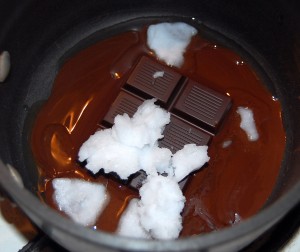

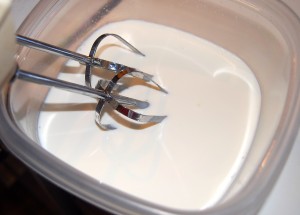
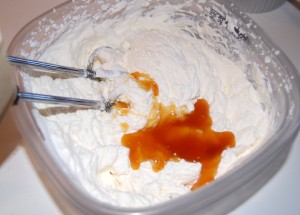
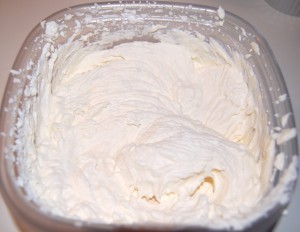

















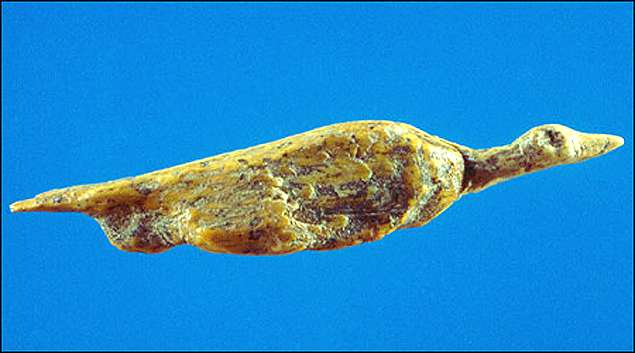

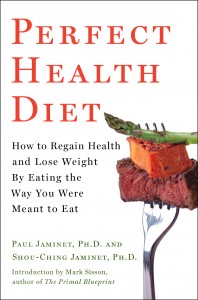


Recent Comments